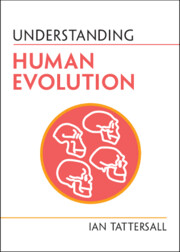Book contents
- >Understanding Human Evolution
- Series page
- Understanding Human Evolution
- Copyright page
- Reviews
- Dedication
- Frontispiece
- Contents
- Maps
- Foreword
- Preface
- Acknowledgments
- 1 Evolution
- 2 Technology: Dating, Diets, and Development
- 3 Discovery and Interpretation of the Human Fossil Record: The Early Days
- 4 Discovery and Interpretation of the Human Fossil Record: Later Developments
- 5 Early Bipeds
- 6 The Muddle in the Middle
- 7 Homo heidelbergensis and the Neanderthals
- 8 The Emergence and Spread of Homo sapiens
- Epilogue
- Summary of Common Misunderstandings
- References and Further Reading
- Figure Credits
- Index
- References
References and Further Reading
Published online by Cambridge University Press: 21 July 2022
- >Understanding Human Evolution
- Series page
- Understanding Human Evolution
- Copyright page
- Reviews
- Dedication
- Frontispiece
- Contents
- Maps
- Foreword
- Preface
- Acknowledgments
- 1 Evolution
- 2 Technology: Dating, Diets, and Development
- 3 Discovery and Interpretation of the Human Fossil Record: The Early Days
- 4 Discovery and Interpretation of the Human Fossil Record: Later Developments
- 5 Early Bipeds
- 6 The Muddle in the Middle
- 7 Homo heidelbergensis and the Neanderthals
- 8 The Emergence and Spread of Homo sapiens
- Epilogue
- Summary of Common Misunderstandings
- References and Further Reading
- Figure Credits
- Index
- References
- Type
- Chapter
- Information
- Understanding Human Evolution , pp. 155 - 171Publisher: Cambridge University PressPrint publication year: 2022



